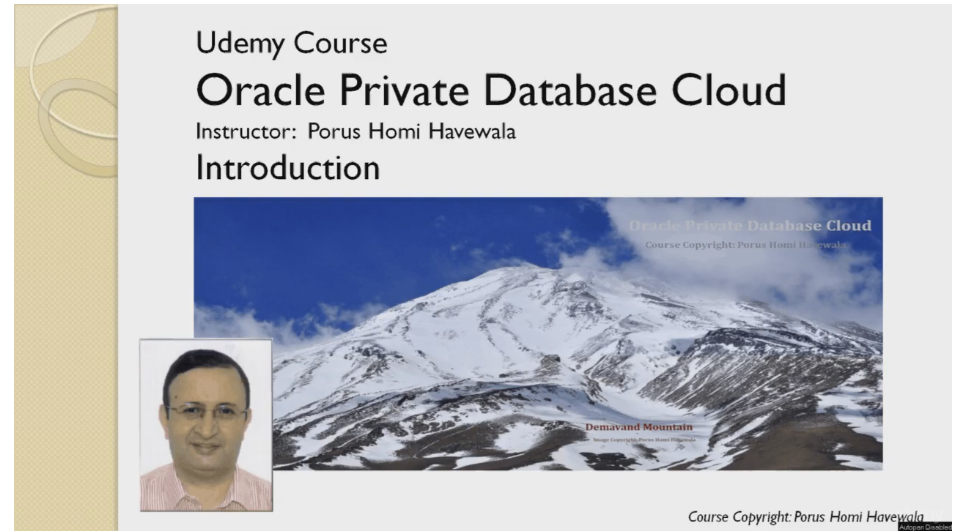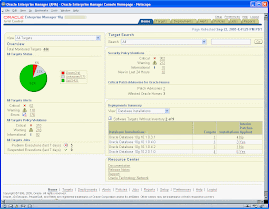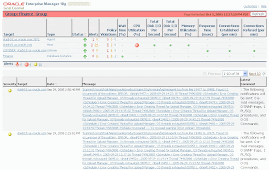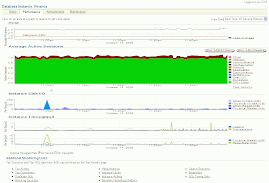People, process and planning are the three key elements to success in a private cloud journey. Some common questions i hear from field/customers often relates to tasks involved in setting up Database-as-a-Service(DBaaS) using Oracle Enterprise Manager 12c from scratch and how these tasks are mapped to current IT roles and responsibilities - overall list of activities that needs to be performed to setup and achieve DBaaS and who does what during the implementation process.
In terms of roles, responsibilities and users, you will map to these categories
- Project Manager is responsible for working with all stakeholders, project team and coordinating in planning and delivering DBaaS implementation project
- EM Admin sets ups Cloud management infrastructure and is responsible for overall EM 12c installation/configuration and Administration
- Cloud Admins are responsible for managing the Cloud infrastructure(Servers, Network, Storage) and related Administration
- SSA Admins or Cloud DBAs are responsible for Self Service portal setup, managing quotas, policies, target DBs S/W provisioning/ongoing Administration
- SSA Users or End users of Cloud who actually requests for DB instances to be rapidly provisioned on-demand from Self Service portal
Here is a sample Work-breakdown structure(WBS) listing down tasks involved and with individual owners mapped. Note - we have all type of use cases covered in the plan (DBCA, RMAN, Schema as a Service, Snap Clone) and you can pick up any or mix or all of these tasks in your plan depending on your use cases and requirements for implementing DBaaS -
| Activity | Description | Owner |
| A. Initiation and Startup | ||
| Determine scope of implementation | Determine and document scope of DBaaS Cloud implementation together with customer and end users. Determine requirements and goals. Introduction meeting implementation team. | Project Manager |
| Coordination and quality management | Coordination and quality management on throughout all phases of the implementation | Project Manager |
| Define High availability Needs | Determine the level of High availability required | Project Manager |
| Technical intake | Technical intake meeting; Infrastructure requirements (Hardware, OS, network/firewall, s/w requirement) for cloud setup | Project Manager |
| Functional intake | Functional intake meeting; Monitoring /Reporting/Alerting requirement. User/Roles/Groups/Rules model | Project Manager |
| Deliver implementation plan | Document requirements and goals. Document required functional and technical configuration. Build architecture Diagram. Update estimate planning based on implementation plan. | Project Manager |
| B. Infrastructure Setup | ||
| Install hardware systems | Plan EM12c compatible hardware systems | EM Admin |
| Operating system installation | Installation of certified OS platform [Refer Certify on MOS] | EM Admin |
| Network configuration of hardware systems | General network configuration of hardware systems I.e. TCP/IP, routing, NTP, firewall access, SSH, HTTP and HTTPS access. Set up network access between systems and work place of end users. Optionally implementation of remote access | EM Admin |
| C. Production EM 12c Cloud Control Installation | ||
| Install of Oracle Database 11gR2 | Installation of Oracle Database 11gR2 for Repository | EM Admin |
| Installation of EM 12c Cloud Control Release 2 Update 1 and latest PSU | Installation of EM 12c Cloud Control OMS/Agents | EM Admin |
| Review HA, Security, Sizing Best practices | Setup as per EM 12c Admin guide | EM Admin |
| Review recommended patches | Review latest PSU and DBaaS patches as per MOS Note 1549855.1 | EM Admin |
| D. Setting up High Availability | ||
| Configure Repository For High Availability | Enable
Repository as per database high availability best practices. Configure Standby database @ DR site for EM cloud control repository. Configure repository database as RAC database with 2 or more nodes Configure OMS for RAC/standby repository |
EM Admin |
| Configure OMS for High Availability | See Enterprise Manager Cloud Control Administrator's Guide for Configuring OMS for high availability | EM Admin |
| Configure Agents for High availability | See Enterprise Manager Cloud Control Administrator's Guide for Configuring Agents for high availability | EM Admin |
| Test failover strategy | Test the Repository and OMS failover to standby site | EM Admin |
| Setup backups | Setup back ups for Repository, OMS and agents | EM Admin |
| E. EM 12c Cloud Control Functional configuration | ||
| Defining Roles and assigning users | Setup Cloud, SSA Admin and SSA User roles and users | EM Admin |
| Setup S/W Library | Setup S/W Library for self update/plug-ins/cloud functionality | Cloud Admin |
| Setup Self Update | Setup self update to get new and updated capabilities when they become available between official releases | EM Admin |
| Setup required plug-ins on OMS | Oracle Cloud Application, Database, Chargeback and Capacity planning, Storage Management Framework (SMF) and Virtualization (VT) plug-ins are required | EM Admin |
| Customize SSA Login Page (Optional) | Configure Self Service Portal to customize the login page (eg option to have company brand image/service provider and tenant brand) | EM Admin |
| Define/setup Notification methods | Setup mail server for Notification. Setup email address for yourself and other administrators. Test and setup other notification methods if required | EM Admin |
| Add Host targets which are going to be used for Cloud | Push Agents on Servers part of PaaS Infrastructure. Push plug-ins on hosts | Cloud Admin |
| Configure Hosts for Privilege Delegation | Configure Hosts for Privilege Delegation. Setup Privilege delegation settings in Cloud Control. Setup named credential for cloud self service | EM Admin |
| Provisioning Oracle RDBMS s/w on Hosts | Provision/Configure
and add Oracle Home as target in EM12c - Refer to EM 12c Lifecycle Management
Admin guide for DB provisioning details. Optional - If planning to use GI/RAC for cloud services, provision/configure GI/RAC Oracle Homes as targets in EM12c In case of Exadata, Grid Infrastructure and RAC Database software is already deployed on compute nodes via OneCommand from Oracle, so SSA Administrator just needs to discover Oracle Homes and Listener as EM targets. Databases will be created as and when users request for databases from cloud. |
SSA Admin |
| Configure Listener | Configure and add Oracle Database Listener as target in EM12c | SSA Admin |
| F. Exadata Targets Monitoring Configuration in EM (Optional - in case DBaaS setup is on Exadata) | ||
| Deploy Agents on compute nodes | Deploy Agents on Exadata compute nodes | EM Admin |
| Exadata System Discovery and Configuration | Specify host from which Exadata server is being discovered. Specify discovery parameters for Infiniband switches. Specify discovery parameters for associated subsystems, such as ILOM, KVM, Cisco switch. Complete discovery and confirm that all targets have been discovered. Verify that cell groups have been created for cells associated with each database. Verify the targets in the topology view of the Exadata Database Machine system. Navigate the topology and verify the configuration of the each of the targets in the Exadata Database Machine system. | EM Admin |
| Exadata System Alerts, Metrics, Performance Monitoring and Actions | This use case will demonstrate the different alerts, metrics monitoring and actions available | EM Admin |
| Database to Exadata drilldown and IORM | Demonstrate the ability to drill down from the database I/O to Exadata and then control the database I/O on Exadata using IORM | EM Admin |
| G. DBaaS Functional configuration (RMAN, DBCA) | ||
| Creating PaaS Infrastructure zone | Create Database zones. Add Hosts in PaaS Infrastructure zones | Cloud Admin |
| Create Database Pool | Setup a pool of Oracle homes. The Oracle homes should be of the same version, platform | SSA Admin |
| Configuring Request settings | Configure the database request settings by specifying when a request can be made, its duration and its retention period | SSA Admin |
| Configure Quotas | Configure Quota as aggregate amount of resources that can be granted to each self service user belonging to a certain role | SSA Admin |
| Create DBCA/RMAN based Profiles | Configure Profile that capture source database information as RMAN backup or DBCA template | SSA Admin |
| Setup Service Templates in Catalog | Create service templates as standardized service definition that is offered to self service users to create databases | SSA Admin |
| Configure Chargeback | Defining a Universal Charge Plan. Create Extended Charge Plan. Create a Business Hierarchy of Cost Centers | SSA Admin |
| Provisioning Oracle database | Provisioning Oracle database instances using SSA | SSA User |
| Verify Chargeback Reports | Verify Chargeback Reports | SSA Admin |
| H. Schema-as-a-Service Functional configuration | ||
| Discover/Provision Oracle Database as Managed Target | Provision/Configure and add source database and Databases where Schema is going to provisioned as targets in EM12c | SSA Admin |
| Creating PaaS Infrastructure zone | Create Database zones. Add Hosts in PaaS Infrastructure zones | Cloud Admin |
| Create Database Pool | Setup a pool of databases. The databases should be of the same version, platform | SSA Admin |
| Configure Schema export based Profiles | Create a database provisioning profile using Export Schema objects | SSA Admin |
| Setup Service Templates in Catalog | Create service templates as standardized service definition that is offered to self service users to create schemas | SSA Admin |
| Configure Quotas | Configure Quota as aggregate amount of resources that can be granted to each self service user belonging to a certain role | SSA Admin |
| Configure Chargeback | Defining a Universal Charge Plan. Create Extended Charge Plan. Create a Business Hierarchy of Cost Centers | SSA Admin |
| Provision Schemas | Provisioning Oracle schema/service instances using SSA | SSA User |
| Verify Chargeback Reports | Verify Chargeback Reports | SSA Admin |
| I. Snap Clone Functional configuration | ||
| Creating PaaS Infrastructure zone | Create Database zones. Add Hosts in PaaS Infrastructure zones | Cloud Admin |
| Create Database Pool | Setup a pool of databases. The databases should be of the same version, platform. | SSA Admin |
| Register and Manage Storage servers | Configure and setup ZFS/Netapp storage servers in EM 12c | SSA Admin |
| Configure Snap Clone based Profiles | Create Database Provisioning Profile Using Snapshots | SSA Admin |
| Setup Service Templates in Catalog | Create service templates as standardized service definition that is offered to self service users to create instances | SSA Admin |
| Configure Quotas | Configure Quota as aggregate amount of resources that can be granted to each self service user belonging to a certain role | SSA Admin |
| Configure Chargeback | Defining a Universal Charge Plan. Create Extended Charge Plan. Create a Business Hierarchy of Cost Centers | SSA Admin |
| Provision using Snap Clone template | Provisioning Oracle database instances using SSA | SSA user |
| Verify Chargeback Reports | Verify Chargeback Reports | SSA Admin |
| J. Knowledge transfer | ||
| DBaaS Cloud setup demo/presentation | session to deliver overview of the implemented system and usage | Cloud/SSA Admin |
| K. Delivery | ||
| Delivery meeting | Delivery meeting initiated and organized by PM | Project Manager |
| Delivery of final implementation rollout | Update of implementation plan to reflect latest implementation changes | Project Manager |
| L. Post implementation tasks | ||
| Periodic health checks | Health check of the EM12c system, EMDiag | EM Admin |
| Periodic Cloud infrastructure usage analysis |
Cloud infrastructure monitoring periodic basis and realigning quotas/policies and pool infrastructure with business priorities |
EM Admin |
| DBaaS Workshop for Administrators/end users | Periodic training sessions for end users and Admins on DBaaS and EM 12c Monitoring/Administration capabilities | Cloud/SSA Admin |
| Post implementation assistance | Periodic reviews of Cloud and Management infrastructure and expansion planning with stakeholders and project team | EM/Cloud/SSA Admin |
Additional information -
- Video : Meet Growing IT Demand for Databases with Private DBaaS
- Private Cloud Setup and Administration guide
- Zero to Cloud Resource Center
- Schema as a Service for Extreme Consolidation
- Delivering Database as a Service using Oracle Enterprise Manager 12c
- Best Practices for Database Consolidation in Private Clouds
- Demo - Oracle Cloud Management
- Demo - Setting up Database Clouds for Schema as a Service
- Oracle
Database Resource Manager













